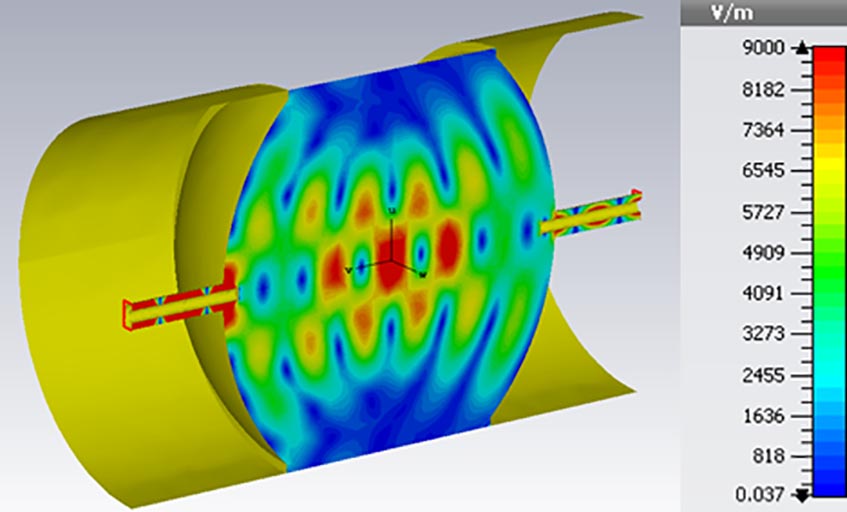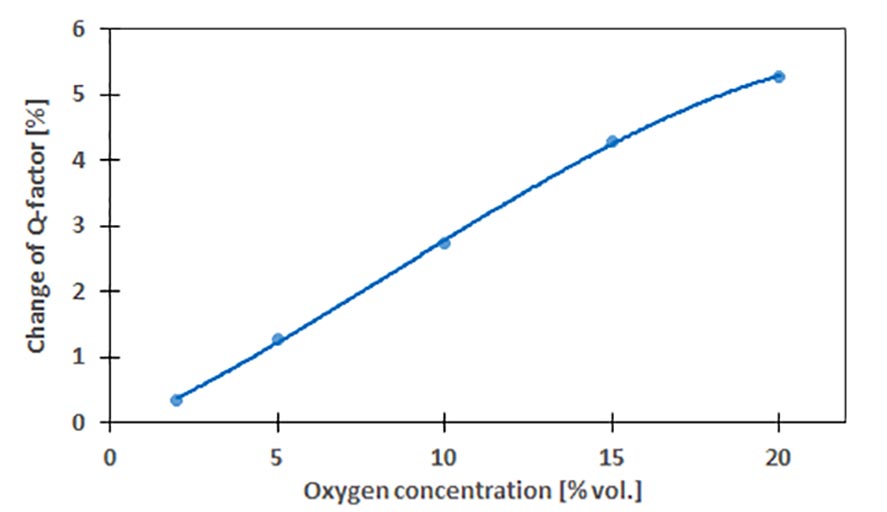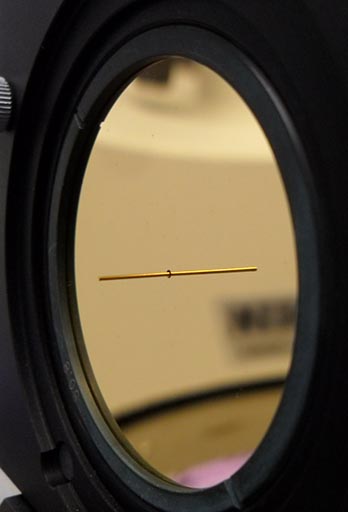Oxygen measurement by cavity-enhanced mm-wave spectroscopy



A cavity enhanced millimeter-wave absorption spectrometer for oxygen concentration measurement was developed in the framework of the ENIAC project ESEE (Environmental Sensors for Energy Efficiency) together with partners from Airbus, Infineon and the Friedrich-Alexander University Erlangen-Nürnberg. The application background is the analysis and control of the air quality in buildings and vehicles and an energy efficient air conditioning.
The oxygen measurement system consists of a resonator of the Fabry-Pérot type that is used as a sample cell, of an integrated mm-wave micro transceiver, and of coupling means to connect the resonator to the transceiver. The air in the sample cell is influencing the quality factor of the resonances at oxygen specific frequencies by the content of oxygen. Oxygen shows a significant absorption peak at frequencies around 60.6 GHz and leads to a concentration dependent damping of the resonator which is used as a measure for the oxygen concentration. To achieve a compact sensor system, the concept envisages two integrated transceiver circuits.
In order to achieve a practically relevant sensitivity, the resonator is designed to virtually increase the absorption path by its quality factor. Therefore, a high quality factor is desired. The Fabry-Pérot resonator operates at high-order resonant modes to cover the wavelength range between 50 GHz and 70 GHz by multiple resonances with a peak density of approximately 1.33 GHz. It consists of two metal mirrors with a diameter of 50 mm. The quality factor is influenced by the mirror size, by the roughness and the surface conductance of the mirror surface, and by the damping caused by the coupling to the transceiver ports. In contrast to former work, which uses coupling foils in between the both mirrors of the Fabry-Pérot resonator and external antennas, a coaxial coupling principle is used here. Two stubs, connected to the signal input and output ports of the transceiver, are located in the center of each of the mirrors respectively. They are directly connected to the coaxial ports of the transceiver. The penetration length of the stubs inside the Fabry-Pérot resonator influences the coupling strength and the damping of the resonator as well.
The stubs have a 0.6 mm diameter and are mechanically supported either by flange launchers which are fixed at the back side of the mirrors or by interposers made of high-frequency PCB substrate.
The integrated SiGe frontends of the transceiver address a frequency band from 50 GHz to 70 GHz. They are realized as heterodyne structures with integrated directional couplers, thus it is possible to measure the same parameters as with a commercial Vector Network Analyzer. The transceiver performs a frequency sweep over the desired range and allows the normalization of the amplitudes and limits the risk of cross sensitivity to other components in the air.
Testing the system, a first resonator sample was coupled to a commercial vector network analyzer for transmission measurements. The resonance peaks have a magnitude between – 20 dBm and – 40 dBm. Different oxygen concentrations were measured in a concentration range of 0 % … 20 %, resulting in a decrease of amplitude and bandwidth of the resonant peaks at higher oxygen concentration.
Due to the sensor principle without hot parts, an application within sensitive areas, e.g. inside of fuel tanks is possible. The sensor may also be used for detection of other gases with high absorption coefficients in the millimeter wave range (ammonia, sulfur dioxide).
 Fraunhofer Institute for Electronic Nano Systems
Fraunhofer Institute for Electronic Nano Systems